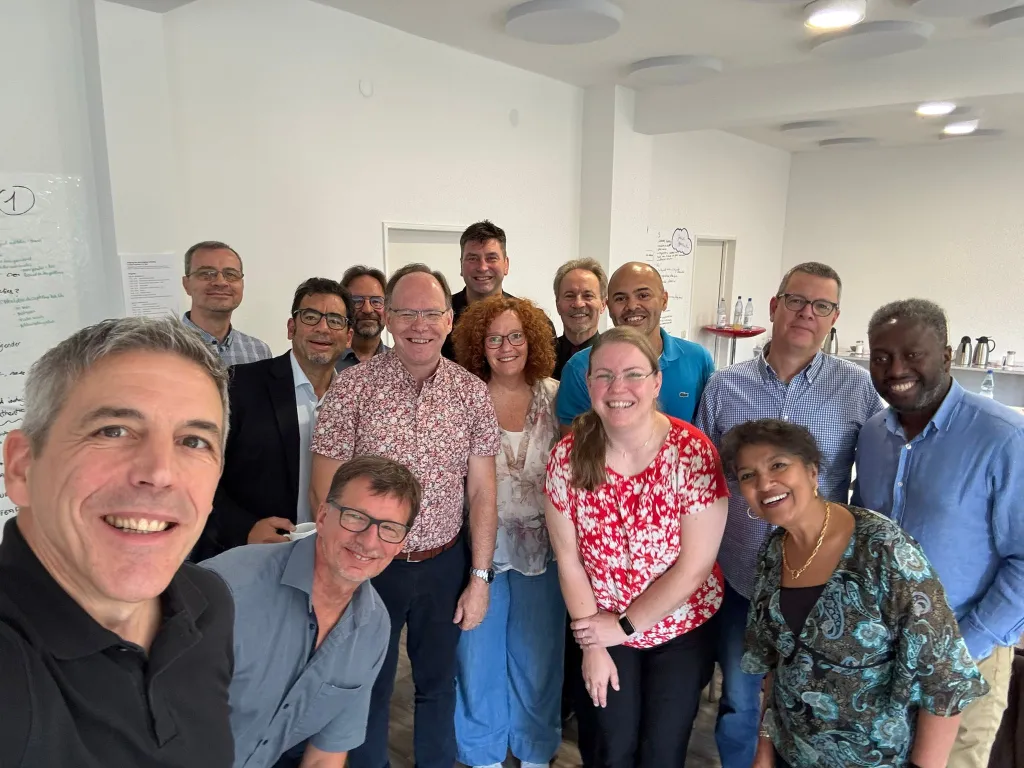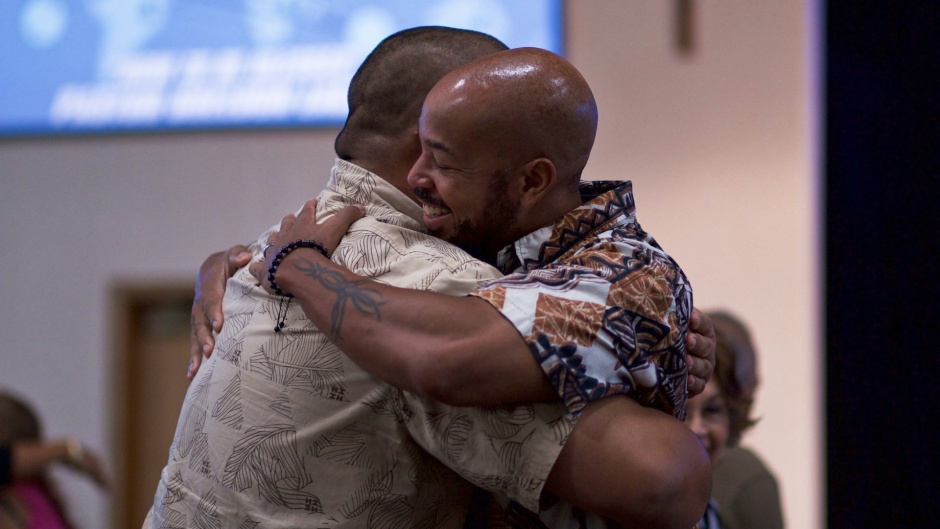Fourteen key mission leaders from different mission networks and organisations all across Europe met in Frankfurt (Germany).
They represented European Evangelical Alliance (EEA), European Evangelical Missions Association (EEMA), Evangelical Mission Associations from Germany, Switzerland and the Netherlands, the One People Commission of Evangelical Alliance UK, Global Connections, All4Aid, Wycliffe, ReachGlobal and Lausanne Europe.
One of the objectives of the mission consultation was to reimagine Europe in a polycentric mission world through exploring the role of Europe in the future of global mission in a changing missional landscape.
In a world where mission is no longer centred in one place, but expressed through many voices, movements and regions, Europe finds itself at a strategic crossroads.

Participants in the September 2025 gathering in Frankfurt.
The representatives at the meeting discussed questions such as: What is the contribution of European mission networks and leaders in this new reality? Or what does it mean to lead, collaborate, and serve in mission – from and to Europe?
Part of the aim of the mission consultation was to also reimagine a vibrant, relational, and missional European Evangelical Mission Association (EEMA).
The participants were asked to come prepared to reflect about the most urgent needs regarding mission and collaboration, challenging questions for mission organisations, opportunities or critical points that should be raised, and helpful resources (from research papers to podcasts) in this field.
Commonalities that emerged in the conversation in Frankfurt were the diaspora developments all across Europe (churches led by migrants and ethnic minorities) and engagement with young people and leaders.
The churches in Europe need to move beyond situating diaspora mission with the context of Majority World communities in Europe “towards a truly intercultural missiology, where diaspora missiology can intersect with indigenous European missiology”, it was said.
“Indigenous Europeans need to work together with Majority World communities in Europe to form new expressions of church and mission”. To do this, “we must unpack realities honestly, break down silos, and recognize that Europe is not monolithic but richly diverse”.
On the other hand, “second and third generation migrants see themselves as Europeans because they can speak European languages, they were born in Europe and have adopted a European worldview. In addition is that a rising generation is seeking purpose and belonging”.
These young Europeans are “more open to collaboration, innovation, and holistic mission that embraces justice concerns such as climate justice and other social justice concerns”.
The participants also agreed that amid secularization and post-secularisation, “there are unmistakable signs that God is moving”. There are “stories of renewal, new communities forming, and unexpected growth in faith”. The ‘Quiet Revival’ in Britian is an example of how many young people particularly young men are seeking faith and spirituality.
Meanwhile, in Europe, there also “are tensions and confusion about the respective roles of churches and mission organizations. Clarifying responsibilities, building trust, and fostering partnership will be essential if we are to move forward together”.
A European Public Missiology goes beyond equipping European churches in mission and evangelism, it is thinking broadly of engaging the European public and the various shifts, trends and currents in society.
In this sense, questions discussed included: How can European Public Missiology engage the rise of Islam and also tackle the rise in islamophobia? How can European Public Missiology challenge Christian nationalism but also help to develop Christian citizenship and public witness?
A larger version of this article was published on the blog CMMW.
Published in: Evangelical Focus – europe
– Mission leaders gathered in Frankfurt to discuss Europe’s role in the future of mission
